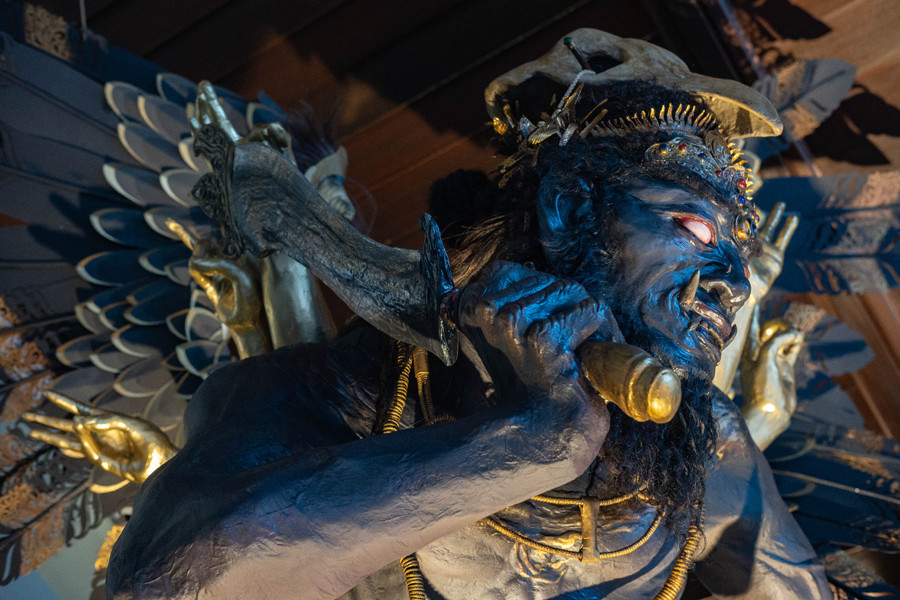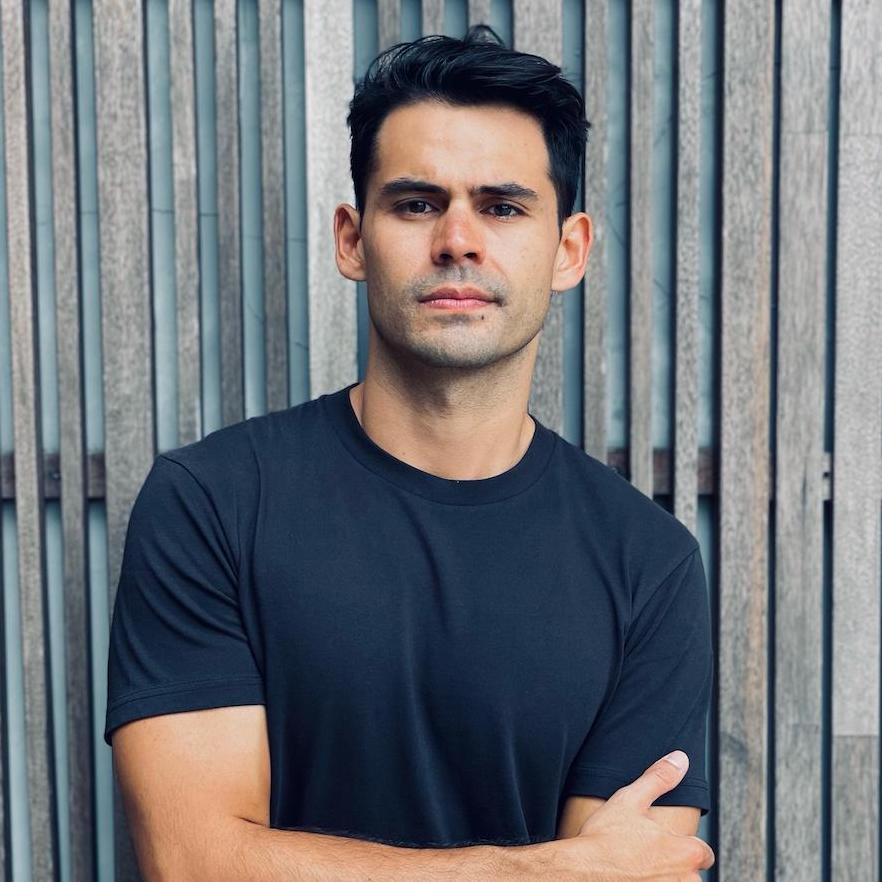Balinese artist and activist, Marmar Herayukti, shared his philosophy behind his re-introduced work ‘Paksi Ireng’, the Blackbird. An ogoh-ogoh statue that asks its viewers to question their perspective on nature, natural disasters and how humans fit into the natural world.

Man vs Nature
The anthropocene. The age of humans, an (unofficial) epoch defined by humanity’s unquestionable effect on the climate and the earth. Since the industrial revolution, humans have slowly distanced themselves from nature and have slowly become ‘its ruler’, or at least that is how we feel as a species.
In Yuval Noah Harari’s book, Homo Deus (2015), this is exactly what the author discusses. Homo (human), Deus (God), the human god; the evolution of our species to become the world’s most dominant and most controlling. Urban environments, technology, modern (and distant) agriculture… all of these things have separated us from the natural world. Medicine, gene modification, weather prediction, and more have given us tools to bend and shape the natural order to our benefit.
Yuval Noah Harari mentions that whilst all of this seems normal to us, for previous generations this would have been beyond belief. Before, when famine and pestilence hit, shares the award-winning author, peasants begged for the mercy of the gods, for mother nature’s blessings — they were powerless. Today, when there’s an outbreak or widespread hunger, the solutions are in the hands of humans. If the situation isn’t contained, it wasn’t because one was powerless, it’s because we made a mistake, we didn’t know enough. It’s a technical glitch, not divine intervention.
This distance between nature and man is something that art-activist Marmar Herayukti discussed in a talk held pre-Nyepi (2021), where he launched his Paksi Ireng installation at The Westin Resort Nusa Dua Bali.
Blackbird, Fly

Paksi Ireng is a mythological bird, its name translating to “blackbird”. The artist took this as inspiration for an ogoh-ogoh effigy he made back in 2018, displayed in Denpasar to great success and victory in the official parade. Marmar thought the time was right to resurrect the blackbird in the current pandemic, albeit a smaller version, as its themes were ever more relevant during the pandemic.
Paksi Ireng, a Bhuta Kala, demonic being of another realm, snarls down from his pedestal. His skin and feathers are jet black, his eyes glow red, teeth sharp and bare, wearing a bird’s skeleton on his head. His large muscular body contorted as his impressive wings spread wide; he’s on the hunt, gripping a knife used to cut thread of life itself (pengentas). He is nature (bhuta; also ‘space’), he is time (kala).
Paksi Ireng represents nature, says the artist, and how we see it. Nature is scary, a dark and powerful force. When natural disasters strike, nature is the bringer of death. We blame nature for affecting us, for working against humans, that it has done something bad to humans and humankind.
This is the perspective the artist aims to address.
Nature, even in ‘disaster’, is simply continuing its own cycle. What we deem as disasters are simply the ebbs and flows of nature, be it an earthquake, an eruption, or even a virus outbreak. These moments, if anything, should be reminders that humans are a part of nature.
Bhuta and kala, time and space. When struck by a natural disaster, aren’t humans simply in the wrong place, at the wrong time? We have chosen to live by the flooding river, the erupting volcano, the turbulent seas; thus we have chosen to live side-by-side with nature. We should know its risks. When disaster, the demon, bhuta kala, comes, are we then just in the wrong place at the wrong time?

When we decide to look past ‘nature as a frightening, powerful beast’, explains the artist, we then notice our place within it. We then begin to see the benefits, blessings and necessity of nature. This, he has visualised as eight golden hands that emerge between the beasts back and wings, each hand holding a specific mudra, or religious gesture. Eight hands to symbolise the eight directions, central to Balinese philosophical belief. What do you want to see: nature’s snarling face, or the blessings it brings?
“Humans blame nature for the loss of life, but forget that without nature their would be no human life”, writes Marmar.
Time is Money
Bhuta kala are demons, but they are also symbolic of the inner demons of humans, too. The artist expressed that humans now put too much importance on money and power, so much so that we have equated the importance of money with time: “Time is Money”.

We have thus elevated material wealth to something that is at the very essence of being, time, and thus spend our lives forever in its pursuit. This thinking, Time is Money, always gives us the illusion that once we have a lot of money, we have time in our hands. Once again we control the essence of nature, separating us from what we are a part of.
All-in-all, Marmar Herayukti’s piece, Paksi Ireng, is his reminder for humans to remain humble under the thralls of nature, to remember that humans too are a part of the nature we seek to control and conquer. The message matches the artist’s ongoing environmentalism in Bali, too.









